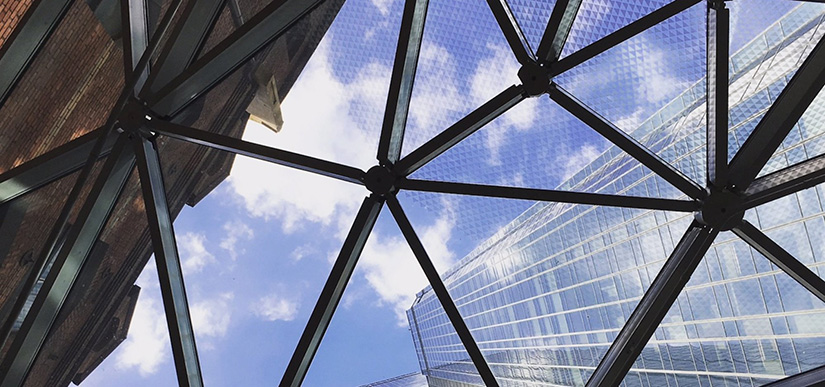Workplace Psychology & Office Selection
23rd Feb 2018

Most senior executives have completed a psychometric test at some stage in their career, but few would ever know the result or how the analysis was effectively used by the employer.
According to Australian Psychological Society (APS), Psychological Testing, when undertaken properly by an experienced and qualified psychologist, will address two key areas of assessment:
- Aptitude – the cognitive ability of a person to do the job (beyond obvious qualifications and experience), and
- Personality – analysis of how a person will perform in differing circumstances, including interpersonal style, work approach, self-management, and emotional intelligence.
With such information traditionally tucked inside a confidential personnel file, few companies have harnessed the probability of establishing a harmonious and highly productive workforce.
The world of office-based employment, and the decision as to where people work, is changing.
Personnel selection processes are predicted to become much more sophisticated in the pursuit of balanced, diverse, and ultra-productive workforces.
Individual psych assessment will become more mainstream, used in conjunction with an individual’s qualifications, reference checks, and interviews. The next step, however, is a greater challenge for workplace psychologists and HR professionals: how to combine the strengths and weaknesses of each person into a cohesive, balanced, team, preferably operating within a single building or space.
Successful companies pivot on great ‘culture’. Naturally, the employment selection process will identify people that are a great fit for the organisation, but the challenge will be a constant cause for re-assessment with respect to where people best work.
So, armed with more accurate information on each individual, how do you select a building, and an interior design, that fuels a healthy mindset across a diverse workforce, that will endure over several years?
Clearly, flexible and adaptive designs have emerged. Activity based workplaces, wellbeing, quiet work areas, collaborative spaces, recreational, and chill-out zones, amongst other initiatives, have entered the vernacular of anyone involved in office leasing.
This is increasingly supported by pro-active building owners offering tremendous additional amenity; end-of-trip services, secured bike stores, and digital portals. Older buildings are being regenerated in the realisation that asset values will eventually fall if continual physical improvement stagnates.
Leasehold flexibility is definitely helping businesses, large and small, to address this transitional period.
In Australia, institutional office portfolio owners such as Dexus and GPT have introduced co-working spaces to accommodate the shift towards flexibility.
Dexus Place and Space & Co are respectively offering office accommodation to fit individual lifestyles, albeit within traditional office towers. Rialto Towers, in Melbourne, will soon offer IWG’s Spaces, a purpose designed co-working community geared towards professionals. HUB Australia is another operator offering a diversity of buildings and interior styles; a strong expansion strategy is similarly underway.
According to Knight Frank, 66,555 square metres of co-working space has opened around Australia in the last 12 months. Globally, the trend is racing ahead, led by WeWork which offers 212 locations across 20 countries. It plans to double the size in 2018 and conjoin further services like WeGrow, a for-profit early learning school.
The significant change that is ostensibly driving the take-up of co-working space is that larger corporations are now adopting substantial accommodation within these facilities.
Initially driven by the need to transition teams while long term offices are refurbished, in many cases the teams don’t want to leave. Now these larger corporations are using the co-working space to manage and retain people as they realise the demand for lifestyle and flexibility is here to stay.
With increasingly compelling anecdotal evidence, surely companies must now invest in comprehensive psych testing in order to bring corporate-wide culture back under one roof, rather than enable a raft of disparate silo’s to emerge?
This information, even at a superficial level, begins to inform a brief to be used in the search for an optimal workplace.
But imagine if a scientific, statistical, based narrative could better inform or validate the brief? Can productivity be increased, and can we improve the likelihood of employee retention by achieving the key measures for happiness beyond the amount of remuneration? An employer’s dream run.
Office premises are usually the second highest operating expense for companies behind remuneration. Needless to say, greater attention must be applied to both facets – people and space.
Fluidity is the key to office selection and design, especially as we transition between the mindsets of Baby Boomers, to Gen X, and onwards to the Millennials. Psych testing will help validate and prioritise actual leasing needs.
Separately, owners of office towers can address many aspects in preparation for this ultimate workplace conundrum:
- Valuation Methodology – re-assess capitalisation rates based on whether the asset is “future-proof” and capable of shorter-term leases, even though greater capital expenditure is required to prepare the building.
- Asset Regeneration – ensure the fundamentals catering to lifestyle are incorporated, and modify design to appeal both cosmetically and mechanically.
- Digital Portal – ensure a community engagement tool such as Equiem is available. This includes essential concierge and retail functionality.
- Invest in Co-Working – select the right operator best suited to the target market for each asset.
- Invest in Technology – geo-fencing, facial recognition systems, and NFC access control systems.

Workplace Psychology & Office Selection
Most senior executives have completed a psychometric test at some stage in their career, but few would ever know the result or how the analysis was effectively used by the employer.
According to Australian Psychological Society (APS), Psychological Testing, when undertaken properly by an experienced and qualified psychologist, will address two key areas of assessment:
With such information traditionally tucked inside a confidential personnel file, few companies have harnessed the probability of establishing a harmonious and highly productive workforce.
The world of office-based employment, and the decision as to where people work, is changing.
Personnel selection processes are predicted to become much more sophisticated in the pursuit of balanced, diverse, and ultra-productive workforces.
Individual psych assessment will become more mainstream, used in conjunction with an individual’s qualifications, reference checks, and interviews. The next step, however, is a greater challenge for workplace psychologists and HR professionals: how to combine the strengths and weaknesses of each person into a cohesive, balanced, team, preferably operating within a single building or space.
Successful companies pivot on great ‘culture’. Naturally, the employment selection process will identify people that are a great fit for the organisation, but the challenge will be a constant cause for re-assessment with respect to where people best work.
So, armed with more accurate information on each individual, how do you select a building, and an interior design, that fuels a healthy mindset across a diverse workforce, that will endure over several years?
Clearly, flexible and adaptive designs have emerged. Activity based workplaces, wellbeing, quiet work areas, collaborative spaces, recreational, and chill-out zones, amongst other initiatives, have entered the vernacular of anyone involved in office leasing.
This is increasingly supported by pro-active building owners offering tremendous additional amenity; end-of-trip services, secured bike stores, and digital portals. Older buildings are being regenerated in the realisation that asset values will eventually fall if continual physical improvement stagnates.
Leasehold flexibility is definitely helping businesses, large and small, to address this transitional period.
In Australia, institutional office portfolio owners such as Dexus and GPT have introduced co-working spaces to accommodate the shift towards flexibility.
Dexus Place and Space & Co are respectively offering office accommodation to fit individual lifestyles, albeit within traditional office towers. Rialto Towers, in Melbourne, will soon offer IWG’s Spaces, a purpose designed co-working community geared towards professionals. HUB Australia is another operator offering a diversity of buildings and interior styles; a strong expansion strategy is similarly underway.
According to Knight Frank, 66,555 square metres of co-working space has opened around Australia in the last 12 months. Globally, the trend is racing ahead, led by WeWork which offers 212 locations across 20 countries. It plans to double the size in 2018 and conjoin further services like WeGrow, a for-profit early learning school.
The significant change that is ostensibly driving the take-up of co-working space is that larger corporations are now adopting substantial accommodation within these facilities.
Initially driven by the need to transition teams while long term offices are refurbished, in many cases the teams don’t want to leave. Now these larger corporations are using the co-working space to manage and retain people as they realise the demand for lifestyle and flexibility is here to stay.
With increasingly compelling anecdotal evidence, surely companies must now invest in comprehensive psych testing in order to bring corporate-wide culture back under one roof, rather than enable a raft of disparate silo’s to emerge?
This information, even at a superficial level, begins to inform a brief to be used in the search for an optimal workplace.
But imagine if a scientific, statistical, based narrative could better inform or validate the brief? Can productivity be increased, and can we improve the likelihood of employee retention by achieving the key measures for happiness beyond the amount of remuneration? An employer’s dream run.
Office premises are usually the second highest operating expense for companies behind remuneration. Needless to say, greater attention must be applied to both facets – people and space.
Fluidity is the key to office selection and design, especially as we transition between the mindsets of Baby Boomers, to Gen X, and onwards to the Millennials. Psych testing will help validate and prioritise actual leasing needs.
Separately, owners of office towers can address many aspects in preparation for this ultimate workplace conundrum: